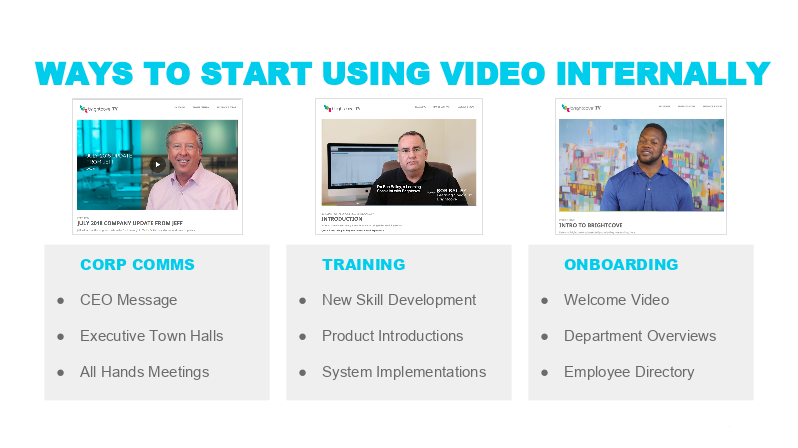As a company grows in size and spills across continents, connecting teams and employees to one another can be impossible. But that’s not the case at Deloitte, the world’s largest consulting firm with 280,000 employees in 150 countries. Why? Because they’ve leveraged a team of just three in-house experts to create a video strategy that connects, engages, and educates Deloitte team members around the world.
I recently spoke with Michael Weinstein, Manager Multimedia at Deloitte, & Rollo Wenlock, Video Workflow Designer at Wipster, to discover how Michael’s three-man team overcame video production challenges, leveraged in-house talent, established approval workflows, and scaled distribution in order to effectively share their work with the entire company.
VIDEO: A NO-BRAINER FOR INTERNAL COMMUNICATIONS
No matter how big or small, every company needs to onboard new employees, train teams on new products and systems, and share messages from company leadership. Increasingly, enterprise video is the obvious channel to address these needs. Employees are already engaging with video online—in a survey, 55% of people reported that they watch online video every day, and 59% of senior executives said they prefer to watch video instead of reading text when given a choice.
Deloitte uses a video-first internal communications strategy as a more human way to connect across its vast employee network. It’s more engaging than traditional communication channels, and it can communicate complex ideas in a short amount of time. Plus, once a video has gone live, metrics are always available, allowing Michael and his team to effectively track the performance of their communications. And with the right platform, video distribution can easily be scaled across teams and regions.
CHALLENGES AND SOLUTIONS FOR SMALL TEAMS
No matter how large the enterprise, video departments are often made up of just a few team members. 85% of webinar attendees work with a team of six or fewer—and those few people face a number of challenges including budget constraints, multi-phase approval processes, and executive buy-in. Here’s how Michael and his team of three solved those challenges:
- They brought video expertise in-house, giving them direct access to key stakeholders and the ability to experiment, and giving the entire organization access to video resources
- Using Wipster, they designed a more effective video production workflow, enabling streamlined collaboration that empowered the right people to pitch in at the right time and helped drive higher quality outcomes
- With Brightcove, they scaled video distribution to all 280,000 employees across the globe via the firewall-protected Deloitte TV Network, with a multi-tab player that arranges content into playlists and channels
With these solutions in place, Michael and his team were empowered to produce more video than ever before, including a ten-episode series called Inside the Executive Studio. 75% of Deloitte employees engaged with the series, which required minimal executive resources yet connected high-level company leadership with employees on a human level.
USING VIDEO PRODUCTION WORKFLOW TO LEVEL-UP YOUR COMMUNICATIONS
As a Video Workflow Designer at Wipster, Rollo Wenlock knows that the most effective video workflows cover the entire process, from brainstorming to results. This comprehensive approach streamlines content creation and delivery, allowing team members to focus on making their best work and scaling up production. Here are Rollo’s four pillars of video workflow:
- Strategy. It’s much easier to scale your video production up exponentially if you laid out a plan to do so right from the beginning. Plus, an effective strategy will identify the goals of your video plan, tell producers who the audience is, and show stakeholders how video can impact the bottom line.
- Creation. A systematized, templated production process leads to greater efficiency and performance. Plus, collaborating is easier when each team member knows their role and where they fit in the process.
- Publishing. Why bother with a seamless production workflow if it grinds to a halt after approval? Including publishing in the process increases delivery speed and decreases the potential for human error. Performance metrics should also be accessible and actionable once publishing is complete.
- Media Asset Management. A comprehensive, searchable media library makes everyone’s job easier. It saves time, leverages evergreen content, avoids repetition, and can spark new ideas.
When your strategy, workflow, performance metrics, and media are seamlessly integrated, your team is able to think creatively rather than getting bogged down in the process. The time and money saved on chasing down assets, approvals, and results can go toward scaling production instead. And when a small team is capable of producing and distributing video content at scale, companies are able to connect, engage, and educate their employees across the globe.





